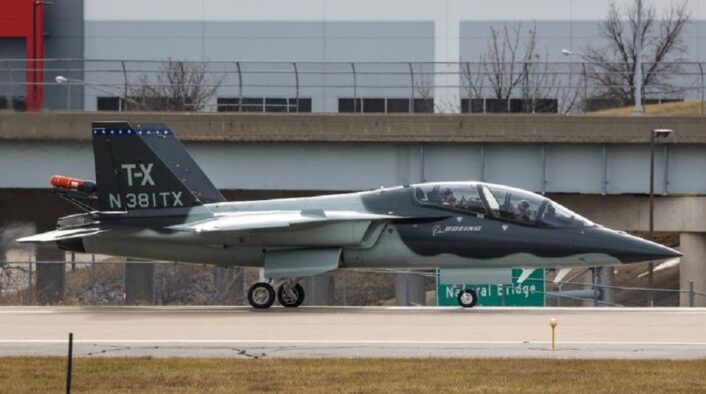Issues in the testing of the Boeing T-7A Red Hawk’s ejection seat forced the postponement of the production’s start, which in turn will delay the expected Initial Operational Capability.
The troubled saga of the Boeing T-7A Red Hawk, the aircraft expected to replace the obsolete T-38C, continues with yet another delay. In fact, according to U.S. Air Force’s Service Acquisition Executive Andrew Hunter, the new advanced trainer jet won’t achieve the Initial Operational Capability until early 2027, a year later than the latest projection after the milestone was first moved from the original 2024 target.
The delay is caused by the postponement of the Milestone C decision, as the beginning of the low-rate initial production had to be delayed because of issues discovered in early flight testing, now solved, and others discovered during testing of the ejection seat. Because of the latter, flight testing by Air Force pilots had to be delayed too, as the jet did not qualify for the Military Flight Release yet.
“Due to issues discovered in the early development and test phase of the program, the Air Force is delaying its Milestone C decision to initiate the buy of T-7A production aircraft”, said Hunter in April. “By extension, this will shift the T-7A program’s initial operational capability (IOC) into the spring of 2027. We are pursuing risk reduction activities to mitigate some of these schedule challenges.”
The issues were specifically discovered during testing of the egress system with mannequins of the smallest class of pilot’s body types expected to fly the aircraft. The tests showed high risk for concussions, unsafe acceleration when the parachute opens and the possibility that a pilot’s helmet visor could fly off at high speeds, according to Air Force spokespersons.
The Government Accountability Office already flagged the T-7’s ejection seat as a “top” program risk and one of two “primary” risks to the trainer’s development. That is because the Air Force mandated in 2020 that companies must design future aircraft to fit a wider range of recruitable Americans, but creating an ejection seat that could work for all these different body types is proving to be tricky.

Hunter said that in February the development team was able to achieve important results during sled tests, dealing with some of the issues of the ejection seat. Clearing these tests will allow the issue of a Military Flight Release to begin the developmental testing, as military pilots are not allowed to fly on the aircraft until the problems with the ejection seat are solved.
The T-7’s design philosophy aligns with the US Air Force’s Digital Century Series strategy, which sees the use of advanced manufacturing, agile software development and digital engineering technology to significantly reduce the time from design to first flight. Even if this allowed to identify and mitigate issues earlier in the development, other issues such as supplier-side critical parts shortages, initial design delays and the need for additional testing to solve stability issues delayed the program.
The T-7, in fact, was affected by a “wing rock” problem, which means the aircraft was unstable in the roll axis when flying at high angles of attack. The continuous oscillations in the roll axis are an undesired effect of swept wings at high angles of attack in various flight conditions, which make the aircraft more difficult to control. Boeing says this issue was solved months ago with a software fix.
Developmental flight testing of the T-7A Red Hawk is expected to begin this summer, with the Milestone C now planned for early 2025, instead of November 2023 as announced in December 2022. This way, the first aircraft would be delivered between the end of 2025 and the beginning of 2026. This also reflects the fact that the production of T-7 was removed from the Fiscal Year 2024 budget request and shifted to the following year.
So far Boeing has built five T-7s, including the first two prototypes T1 and T2. The latter are still flying, although they are not fully representative of the eventual operational aircraft. T1 was also seen in December 2022 during testing of the spin recovery chute ahead of the next round of flight testing, as you can see in the photos in this article kindly sent to us by Jerry McGrath of Cryonic_Photography.
Boeing rolled out the production variant of the Red Hawk in April 2022, bearing the tail flash of the 99th Flying Training Squadron at Joint Base San Antonio-Randolph, Texas, which will be the first unit to operate the new airplane. In the meanwhile, however, the Air Force might have to further extend the service life of some of the T-38s, which are already more than 60 years old.









